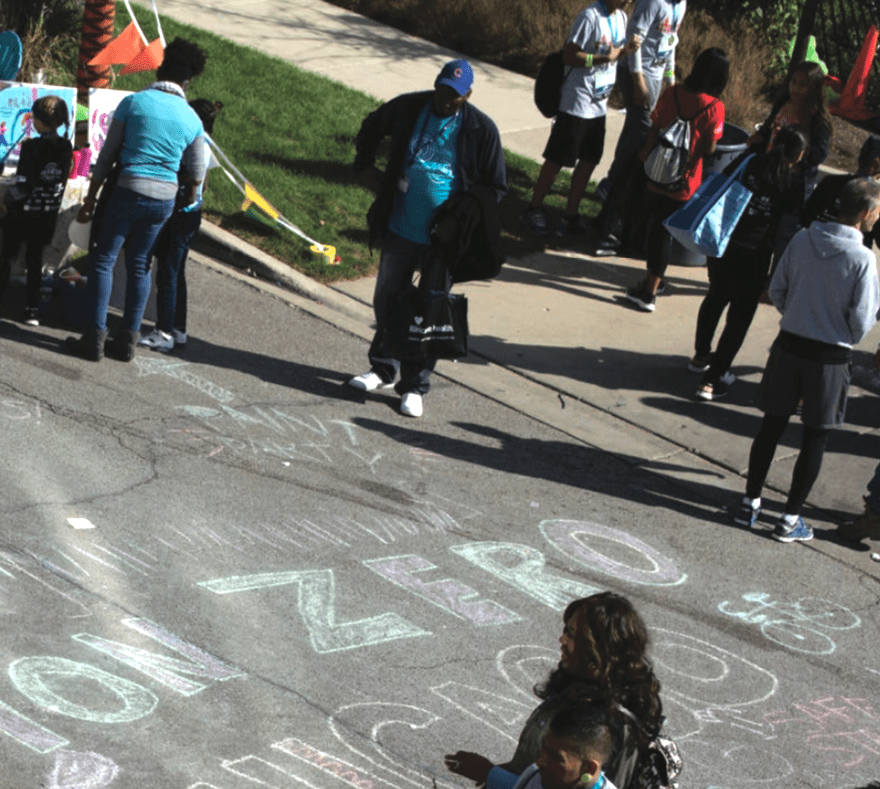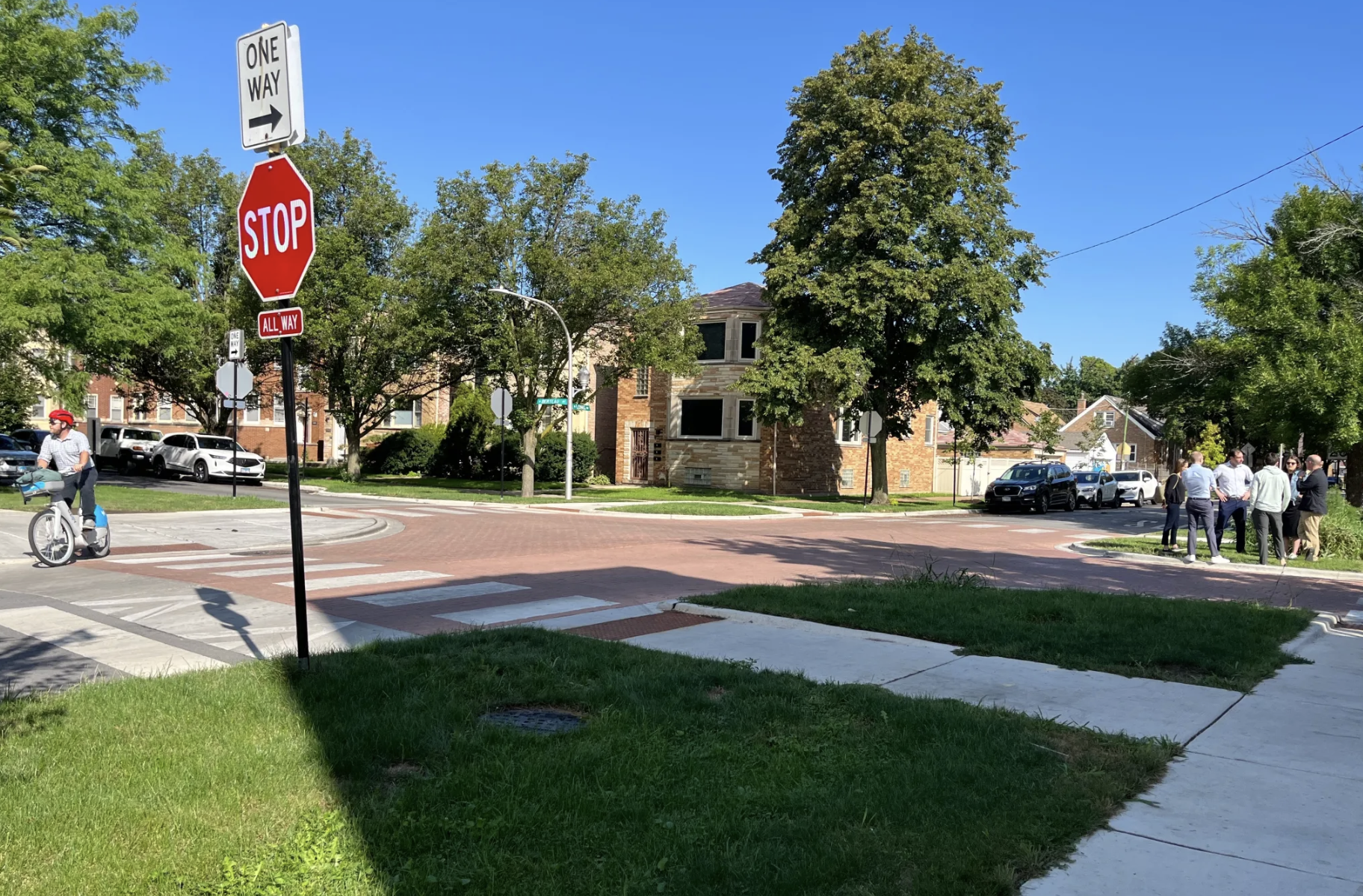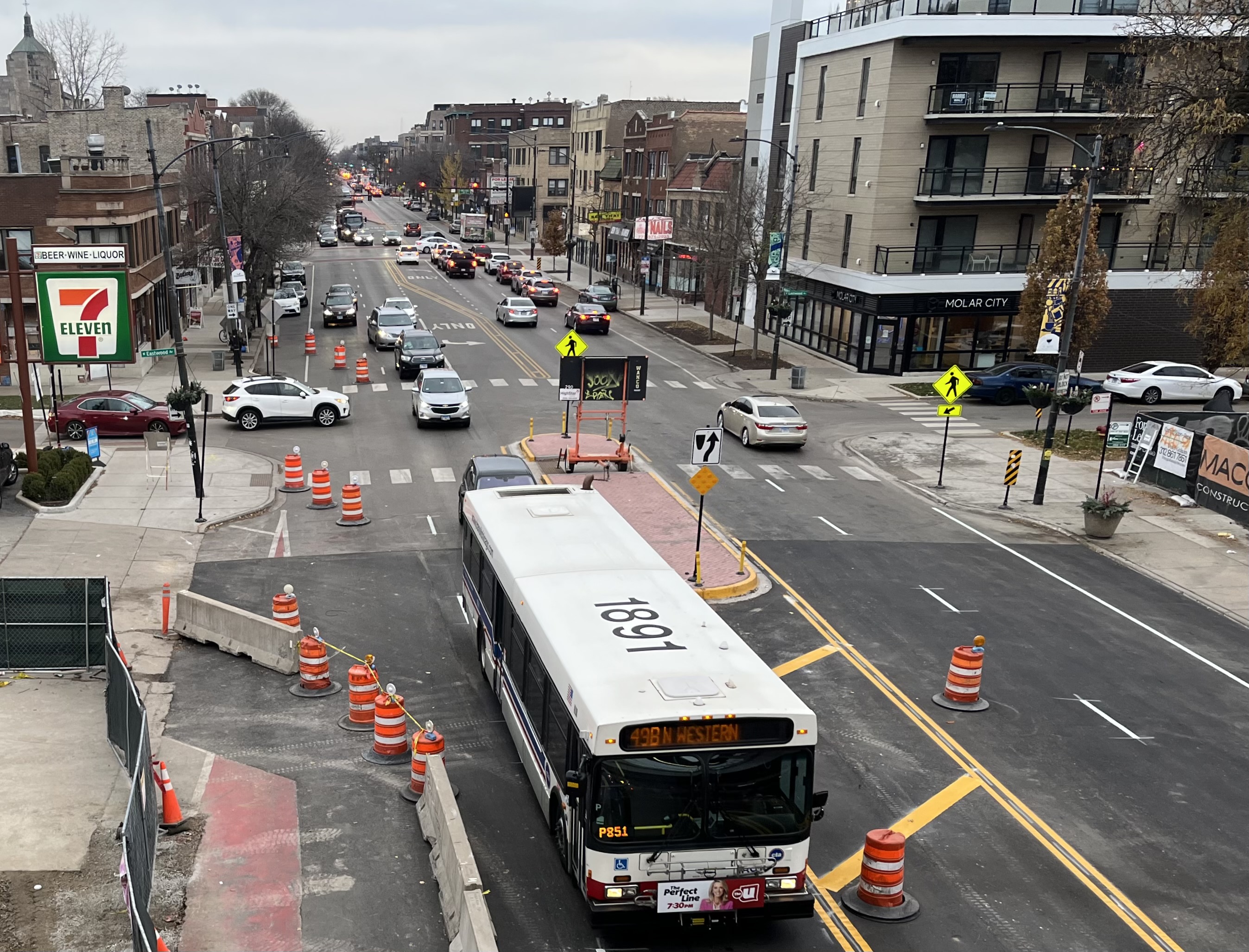Today Chicago mayor Lori Lightfoot announced a milestone in the Vision Zero traffic crash prevention initiative that was launched under her predecessor Rahm Emanuel, the release of the West Side Vision Zero Traffic Safety Plan. Lightfoot was joined by aldermen Howard Brookins Jr. (21st), who's no stranger to crashes himself, Walter Burnett Jr. (27th), and Jason Ervin (28th), plus officials from the Chicago Department of Transportation and other city agencies today at Madison Street and St. Louis Avenue in East Garfield Park, where CDOT recently installed two new pedestrian islands, which the city says were part $6 million spend on safety infrastructure and outereach on the West Side.
The new plan is not yet posted on the Vision Zero Chicago website, but we'll provide a closer analysis of the document in the near future.
“Studies show residents who live in communities that experience economic hardship are three times more likely to die as a result of a traffic crash, which is why our Vision Zero plan and investments are as much about equity as they are about safety," Lightfoot said in a statement. "We must change how we design and use streets, as any traffic-related death is unacceptable when we, as a city, have the tools and strategies to prevent the conditions that lead to these tragedies.”
The Vision Zero West Side Plan includes 15 strategies to improve traffic and pedestrian safety in East and West Garfield Park, North Lawndale and Austin. The recommendations include safety improvements around transit stations; efforts to promote walking and biking to school and make it safer; the installation of pedestrian islands and other walking infrastructure and curb extensions in other locations in the communities, and a street remix for the pedestrian-hostile “Five Corners” intersection of Ogden, Pulaski and Cermak.
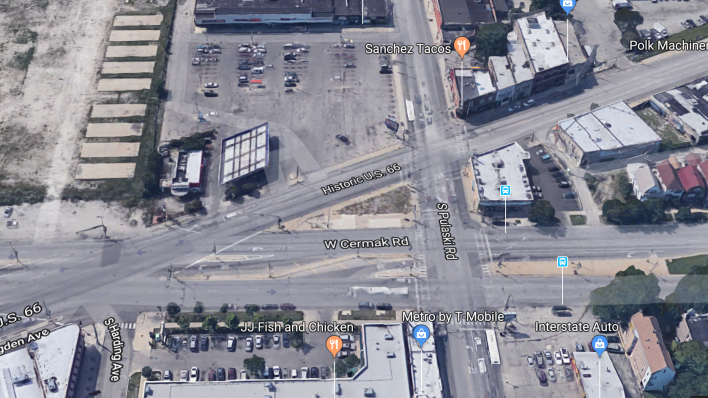
“The safety of Chicago’s streets is CDOT’s top priority, and we are pleased that we’ve been able to work with community stakeholders on the West Side to create a Vision Zero plan that reflects the needs of local residents,” said acting CDOT commissioner Tom Carney. “We look forward to implementing the safety improvements that are outlined in the West Side Plan.”
The West Side plan was written with input from residents of communities that have long seen disproportionate numbers of traffic crashes and injuries. Involved organizations included the Garfield Park Community Council, the North Lawndale Community Coordinating Council, Lawndale Christian Health Center, Build and Austin Coming Together. CDOT will conduct a similar Vision Zero outreach process on the South Side starting in 2020.
“I applaud CDOT and its community partners for their combined efforts to increase safety throughout Chicago and generate recommendations for targeted investments on the West Side to make our streets safer for residents,” said Alderman Ervin in a statement.
"Vision Zero is part of the City’s Healthy Chicago 2.0 plan, where safer traffic management contributes to improving overall public health outcomes," said Chicago Department of Public Health acting Commissioner Allison Arwady M.D. "With community members weighing in on traffic safety in their neighborhoods, we’re ensuring our street designs become safer and making it second nature to look out for each other.”
The West Side plan comes after the initial Vision Zero Chicago Action Plan, released in 2017, used crash data to identify 43 High Crash Corridors and eight High Crash Areas in Chicago, with seven of the eight being on the West and South sides.
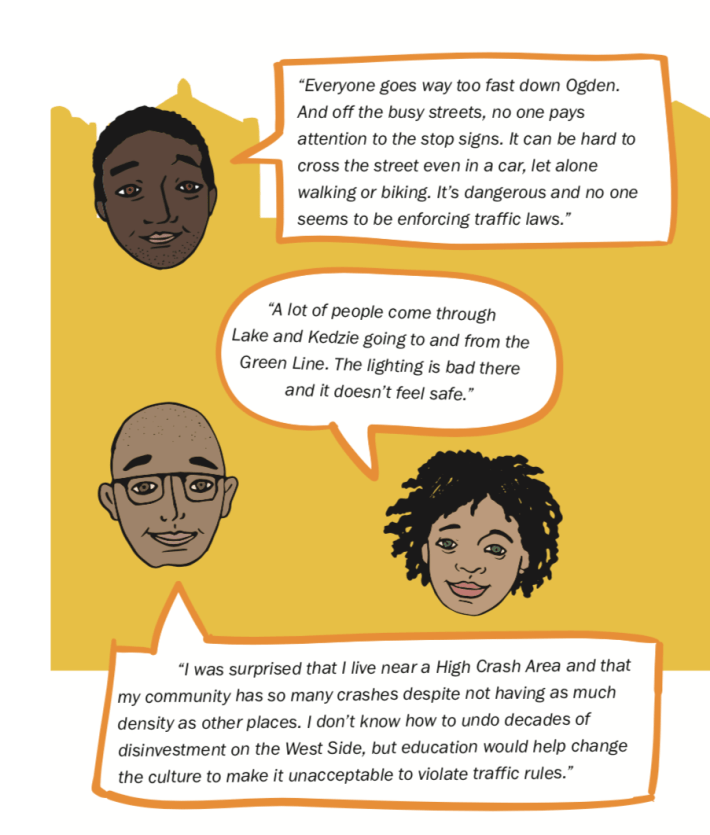
Chicago's Vision Zero initiative is part of the international Vision Zero movement, which originated in Sweden, based on the philosophy that all serious and fatal traffic crashes can be prevented with the right engineering, education, and enforcement policies. Some mobility justice advocates of color of in the U.S. have argued that any increase in traffic enforcement in Black and Brown communities creates the potential for additional incidents of police harassment and abuse.
One of these advocates is Slow Roll Chicago and Equiticity founder Oboi Reed, who previously called for the elimination of additional policing in communities of color as a potential strategy for Chicago's Vision Zero initiative.
Perhaps reflecting feedback from Reed and other advocates, as well as West Side neighbors, the new plan notes that "Residents would like to see the Chicago Police Department involved in Vision Zero primarily through education and community engagement events rather than increased enforcement." Elsewhere the document states, "Regarding traffic safety enforcement, the Vision Zero Chicago Action Plan prioritizes education over fines or other punishment. Traffic safety interactions are to be treated as educational opportunities in most cases."
Last year Reed and several racial equity and mobility justice advocates, met with Mayor's Office staffers to discuss their concerns. As such he said he was puzzled that there appeared to be no references to traffic enforcement by police officers during the release event or in the press release. "This is not the time to be political and obtuse. We are literally talking about Black and Brown people dying in our streets due to higher rates of traffic violence in our neighborhoods." He noted that this discrepancy can be traced to racist city policies, such as car-centric street designs and demolitions for expressways that were imposed on communities of color during the Urban Renewal era.
